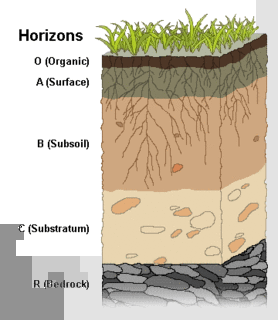 W
WCrotonylidene diurea (CDU) is an organic compound formed by the condensation of crotonaldehyde with two equivalents of urea. It is a white, water-soluble solid. CDU is a component of some controlled-release fertilizers.
 W
WA fertilizer or fertiliser is any material of natural or synthetic origin that is applied to soil or to plant tissues to supply one or more plant nutrients essential to the growth of plants. Many sources of fertilizer exist, both natural and industrially produced.
 W
WMethylene diurea (MDU) is the organic compound with the formula CH2(NHC(O)NH2)2. It is a white water-soluble solid. The compound is formed by the condensation of formaldehyde with urea. Methylene diurea is the substrate for the enzyme methylenediurea deaminase.
 W
WThe history of fertilizer has largely shaped political, economic, and social circumstances in their traditional uses. Subsequently, there has been a radical reshaping of environmental conditions following the development of chemically synthesized fertilizers.
 W
WA controlled-release fertiliser (CRF) is a granulated fertiliser that releases nutrients gradually into the soil. Controlled-release fertilizer is also known as controlled-availability fertilizer, delayed-release fertilizer, metered-release fertilizer, or slow-acting fertilizer. Usually CRF refers to nitrogen-based fertilizers. Slow- and controlled-release involve only 0.15% of the fertilizer market (1995).
 W
WFertigation is the injection of fertilizers, used for soil amendments, water amendments and other water-soluble products into an irrigation system.
 W
WFertilaid as Fertilizer Fertilaid, was one of the first organically certified fertilizers acknowledged by the California Certification of Organics, in 1979. A nationwide process for certification did not begin to exist in the United States until 1990 per the National Organic Food Act. Previous to that, Fertilaid was awarded, in January 1954, its first Patent Office Citation.
 W
WFertilizer burn is leaf scorch resulting from over-fertilization, usually referring to excess nitrogen salts.
 W
WThe Frank–Caro process, also called cyanamide process, is the nitrogen fixation reaction of calcium carbide with nitrogen gas in a reactor vessel at about 1,000°C. The reaction is exothermic and self-sustaining once the reaction temperature is reached. Originally the reaction took place in large steel cylinders with an electrical resistance element providing initial heat to start the reaction. Modern production uses rotating ovens. The synthesis produces a solid mixture of calcium cyanamide (CaCN2), also known as nitrolim, and carbon.CaC2 + N2 → CaCN2 + C
 W
WIsobutylidenediurea (abbreviated IBDU) is an organic compound with the formula (CH3)2CHCH{NHC(O)NH2}2. It is a derivative of urea (OC(NH2)2), which itself is highly soluble in water, but IBDU is not. It functions as a controlled-release fertiliser owing to its low solubility, which limits the rate of its hydrolysis to urea, which is a fast-acting fertiliser.
 W
WN-(n-butyl)thiophosphoric triamide (NBPT) is the organophosphorus compound with the formula SP(NH2)2(NHC4H9). A white solid, NBPT is an "enhanced efficiency fertilizer", intended to limit the release of nitrogen-containing gases following fertilization. Regarding its chemical structure, the molecule features tetrahedral phosphorus bonded to sulfur and three amido groups.
 W
WNutrient pollution, a form of water pollution, refers to contamination by excessive inputs of nutrients. It is a primary cause of eutrophication of surface waters, in which excess nutrients, usually nitrogen or phosphorus, stimulate algal growth. Sources of nutrient pollution include surface runoff from farm fields and pastures, discharges from septic tanks and feedlots, and emissions from combustion. Excess nutrients have been summarized as potentially leading to:Population effects: excess growth of algae (blooms); Community effects: species composition shifts ; Ecological effects: food web changes, light limitation; Biogeochemical effects: excess organic carbon (eutrophication); dissolved oxygen deficits ; toxin production; Human health effects: excess nitrate in drinking water ; disinfection by-products in drinking water; Biodiversity effects: excessive algae blooms.
 W
WPhenyl phosphorodiamidate is an organophosphorus compound with the formula C6H5OP(O)(NH2)2. A white solid, it is used as an inhibitor of urease, an enzyme that accelerates the hydrolysis of urea. In this way, phenyl phosphorodiamidate enhances the effectiveness of urea-based fertilizers. It is a component of the technology of controlled release fertilizers.
 W
WPotash includes various mined and manufactured salts that contain potassium in water-soluble form. The name derives from pot ash, which refers to plant ashes or wood ash soaked in water in a pot, which was the primary means of manufacturing the product before the Industrial Era. The word "potassium" is derived from "potash".
 W
WSoil fertility refers to the ability of soil to sustain agricultural plant growth, i.e. to provide plant habitat and result in sustained and consistent yields of high quality. A fertile soil has the following properties:The ability to supply essential plant nutrients and water in adequate amounts and proportions for plant growth and reproduction; and The absence of toxic substances which may inhibit plant growth.